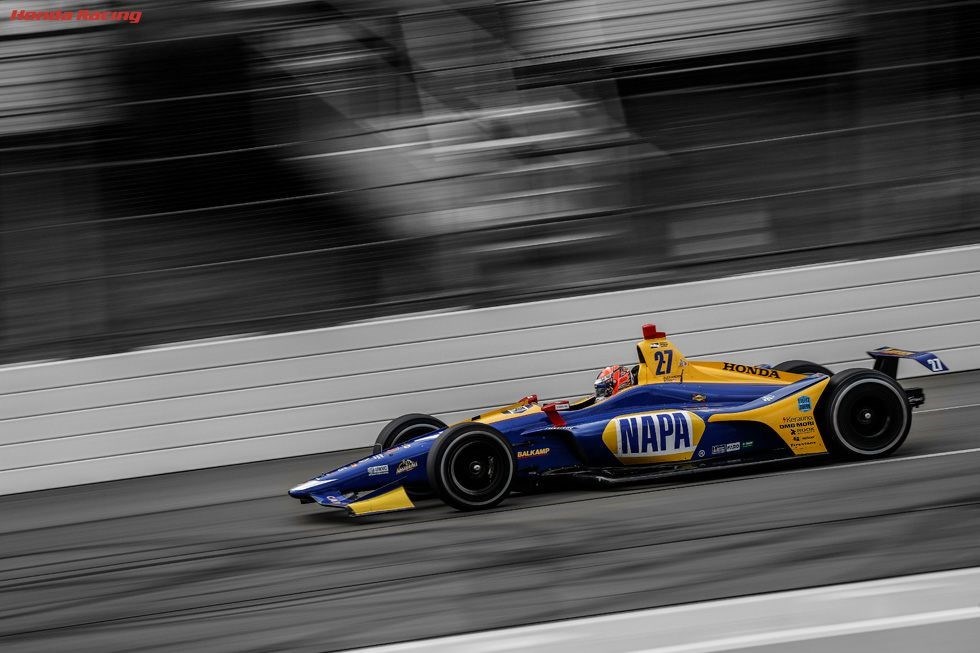
Sunday’s race at Pocono witnessed one of the scariest crashes in recent IndyCar memory. Robert Wickens was trying for an overtake on Ryan Hunter-Reay when the two collided, causing Wickens to spin and be launched into the catch-fence surrounding the track before being violently thrown around and eventually coming to a rest at the bottom of the track.
Quite frankly, it’s a wonder Wickens’ wasn’t killed in that crash, it was a monster and very similar, too similar, in fact, to that of Dan Wheldon’s in 2011 – the only difference is that Wickens’ car stayed upright and Wheldon’s did not. The general rule for motorsport is that a devastating ‘freak’ accident can just about happen once, then the necessary changes have to be made to make sure that it can’t have the same, similar or worse consequences again. Twice, however, is unacceptable. Twice is not a ‘freak’ accident, twice is fundamental problems.
It was only earlier this month that I was writing about how not as much was learnt from Wheldon’s crash as it should’ve been, and now look – that’s been proven in the worst way possible.
Safety in Motorsports Week: Dan Wheldon, A Horribly Perfect Storm
Sure, Wickens’ has survived but not without two broken legs, a broken arm, a bruised lung, spinal fractures and a spinal cord injury of ‘indeterminate severity’. That last part is the most worrying and no-one is yet willing to say what the prognosis looks like for Wickens – but, with racing put to one side, something that Sebastien Bourdais said is very true… “at least he’s alive”.
I’m normally one to support IndyCar when it comes under criticism from the rest of the motorsport world but it’s much harder this time round… there’s a lot of anger from a lot of people as to how this crash could’ve happened again.
One of the biggest problems is the catch-fence that surrounds every oval race track. Its primary function is to keep the race cars inside the race track and prevent any debris from finding its way into the crowd, and, on the whole, its very good at that. However, it also has a tendency to rip cars up in wrecks, causing them to rotate and causing a lot of damage to the car, and often the driver. If a car gets into the fence you know two things: 1) it was a very big crash and 2) the driver will be very lucky to walk away from it unscathed.
Wickens’ saving grace is that he stayed upright and didn’t come into contact with any of the fence posts, especially on a vulnerable part of his body – such as his head. That’s what did it for Wheldon, but the fact that you could have something as potential dangerous as a fence post lining a race track seems ludicrous in itself.
However, it’s all well and good criticising the catch-fences but what could they be replaced with? A replacement would have to be able to withstand the full force of an IndyCar without breaking while not having exposed reinforcements (i.e. fence posts), be able to catch any potential flying debris and not be so expensive that it can’t be rolled out at all ovals, all while not overly inhibiting the view of the spectators at the track. When you put it like that, you see just how big the problem that IndyCar faces is.
Surely, now that it’s been bluntly brought to the management’s attention twice in a fairly short period of time, they’ll be forced into taking action. There are enough questions of IndyCar this time round, when the accident was not fatal – it would be a hundred times worse a third time round, and there’s no saying what the next outcome could be.
That crash could be career ending for Wickens, or he might be able to return, depending on the severity of the spinal cord injury, but at least it was not life ending.
Wickens is not, however, the only scary reality to have come out of that crash.
Ryan Hunter-Reay is one very, very lucky driver to have no injuries from Pocono and be able look ahead to Gateway. Wickens’ spinning, aerial car came within inches of Hunter-Reay’s head, taking out the roll hoop just above him in alarming fashion. IndyCar have massively dodged a bullet with just that aspect of the crash… let alone the rest of it.
And the problems don’t end there. Wickens’ teammate James Hinchcliffe, having already cheated death once, was also caught up in the crash and suffered injuries to his hands. Luckily, nothing was broken, just some cuts and bruises but that too could’ve been a whole lot worse. A fairly sizeable piece of debris entered Hinchcliffe’s cockpit when Pietro Fittipaldi, left with no where else to go, made contact with him and, again, just a few inches different and this too could be a wholly different story.
With not overly different margins, that crash could’ve resulted in three badly injured, or worse, drivers, as opposed to just one. The fact that Wickens’ is the only one of those drivers not to be heading to Gateway is down to luck… not safety innovations.
Two things desperately need to be learnt from the Pocono crash: 1) the catch-fence, and especially fence posts, needs looking at and a safer alternative really needs to be found and 2) the introduction of driver head protection should be paramount with as little delay as is possible.
If those two warnings are not heeded, we could easily have the same supposedly ‘freak’ accident for a third time, and IndyCar’s luck is fast running out.
Leave a Reply